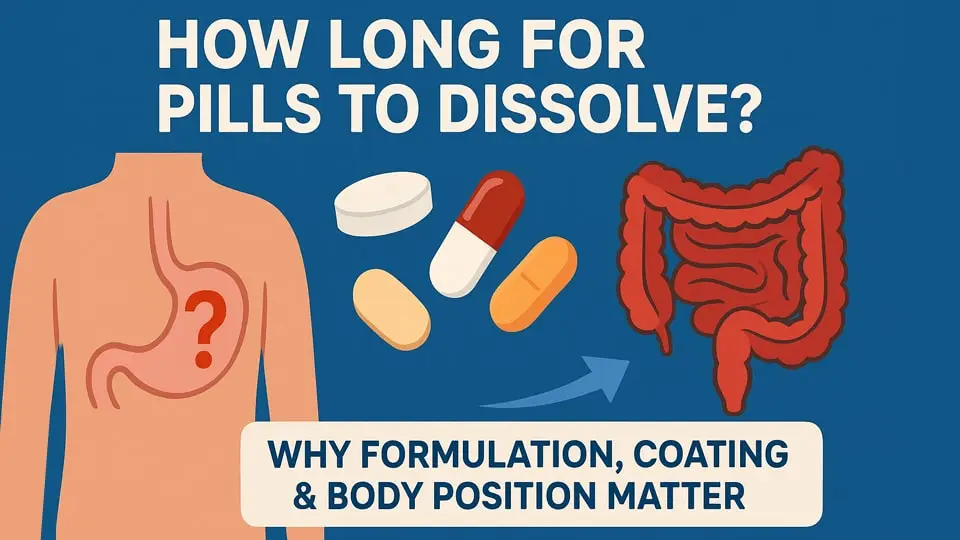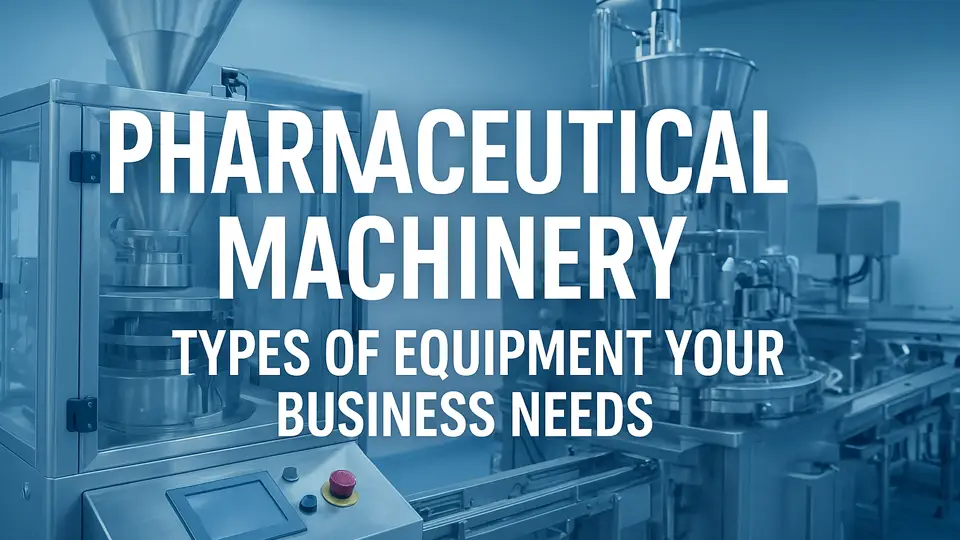
Стик-пак против саше: Полное руководство по ключевым различиям
Узнайте о ключевых различиях между стик-паковкой и упаковкой-саше.. Узнайте об их дизайне, производство
Tablet compression machines, also known as tablet presses or pill presses, are central equipment in the production of solid dosage forms. Whether producing dietary supplements or prescription drugs, manufacturers rely on these machines to compress powders or granules into consistent, measurable tablets. Однако, the demands placed on these machines differ significantly between the nutraceutical and pharmaceutical industries. This article examines the fundamental and technical distinctions of tablet press usage in both sectors, exploring formulation challenges, regulatory expectations, machine design features, and best practices for optimization.
It is important to note that while “nutraceutical” as a term lacks a globally consistent legal definition, many manufacturers treat them under dietary supplement or functional food categories.
Because of this regulatory ambiguity, equipment and process requirements diverge between the two sectors—even though the underlying platform (tablet compression) remains common.

One of the most prominent differences lies in formulation complexity:
Because nutraceutical blends often contain hard or abrasive particles (минералы, botanical fibers) and uneven particle-size distributions, they exert higher wear on tooling and may lead to issues like capping, прилипать, or delamination.
Because of this, tablet presses for supplement production may incorporate enhanced feeder designs, vibration assist, or forced feeder systems to maintain consistency.
Таким образом, the tablet press must be capable of achieving the required compression force, dwell time, and mechanical stability for different tablet volumes.

The stricter oversight of pharmaceuticals means that equipment must support sterility, containment, cleanability, and audit trails.
In pharmaceutical settings, tablet presses are often designed with:
В отличие, nutraceutical presses may use more open designs unless the supplement includes potent or allergenic botanicals that demand containment.
Pharma presses typically include advanced instrumentation: real-time weight monitoring, hardness testing, torque sensors, data logging, and electronic batch records.
Supplement presses are increasingly adopting such instrumentation, but often at additional cost or as optional modules. The demand for traceability in nutraceuticals is growing, pushing convergence toward pharma-grade instrumentation.
Pharmaceutical tablet presses are built with heavier frames, precise cam systems, and faster changeover capabilities.
Nutraceutical presses may prioritize flexibility and cost-efficiency—but when handling abrasive materials, they must still incorporate robust structural design.
Because nutraceutical formulations are more abrasive, tooling used in these applications often requires:
Tablets with deep embossing or complex shapes may exacerbate wear; in nutraceutical settings a simpler, flatter tablet geometry may prolong tooling life.
tabletscapsules.com
In pharmaceutical settings, tooling selection also considers compatibility with APIs (stickiness, moisture sensitivity) but generally sees less extreme mechanical wear.
Pharma plants often run at very high throughput — tens to hundreds of thousands of tablets per hour.
Supplement plants may run smaller batch sizes, more SKU changes, and thus benefit from machines with quick tooling changeovers and flexibility over raw speed. Однако, top-tier supplement producers also invest in high-output rotary presses.
Many equipment providers offer “Nutra Kits”—modifications or enhanced tooling sets to adapt a standard tablet press for handling nutraceutical materials (abrasion-resistant components, кормушки, dust collection).
This modularity allows supplement manufacturers to benefit from the same base hardware as pharma presses, yet adapt to more challenging formulations.
| Аспект | Nutraceutical Tablet Press | Pharmaceutical Tablet Press |
|---|---|---|
| Active Ingredient Load | Higher percentage, multiple natural actives | Lower percentage, fewer APIs |
| Powder Behavior | Coarse, abrasive, variable flow | Engineered for flow, fine particle sizes |
| Tooling Requirements | Hardened/coated tooling, abrasion-resistant | Precision tooling with compatibility to APIs |
| Machine Robustness | Need for durability vs cost trade-off | Heavy-duty, high-precision frames |
| Cleanability & Containment | Basic cleaning, semi-open design | Full CIP, enclosed chambers, GMP hygiene |
| Instrumentation | Optional sensors, дополнения | Integrated, real-time monitoring, data logging |
| Batch Flexibility | More SKU variation, smaller runs | Large continuous runs, fewer changeovers |
| Regulatory Demands | Moderate GMP for supplements | Strict cGMP, проверка, audit control |
On JinluPacking’s product line, the ZP Series tablet press is a reliable model suitable for both pharmaceutical and nutraceutical applications. Its robust mechanical design, flexible tooling change system, and possibility for add-on sensors make it a good candidate for manufacturers seeking versatility.
By selecting versatile models like the ZP Series, manufacturers can straddle the gap between cost-effectiveness and high-quality compliance depending on their product mix.

RQ-HGZP-26D-40D High speed tablet compression machine
Although the core function of a tablet press is the same across industries, the differences in formulation, regulation, material behavior, and operational goals drive divergent machine requirements.
Pharmaceutical tablet presses demand precision, hygienic design, instrumentation, and documentation to satisfy strict regulatory standards.
Nutraceutical presses must handle more challenging, abrasive powders and often trade off ultimate throughput in favor of flexibility and tooling durability.
For a manufacturer producing both supplements and drugs—or upgrading a supplement line toward higher quality—choosing a versatile, upgradeable tablet compression machine (например. Zinlu’s ZP Series with optional kits) allows adaptation over time.
By understanding these distinctions, engineers and decision-makers can better select the appropriate tablet press / Таблетка для таблеток / pill press system to suit their exact manufacturing context.
A tablet compression machine (also known as a tablet press or pill press) is equipment used to compact powders or granules into tablets of consistent size, shape and weight. It performs die-filling, compression and ejection of tablets.
While the principle of compression is the same, key differences include the formulation (natural vs synthetic actives), tooling wear (nutraceuticals often more abrasive), regulatory requirements (pharma stricter GMP), machine hygiene and instrumentation. Например, nutraceutical tablets often require tougher tooling due to abrasive ingredients.
Nutraceutical formulations frequently contain minerals, botanical fibers, larger or irregular particles which are more abrasive and less flow-friendly. This leads to accelerated wear of punches and dies. Поэтому, tooling steels with higher wear resistance (such as high-chrome or tungsten carbide) and protective coatings are commonly used.
Pharmaceutical production must comply with current Good Manufacturing Practices (CGMP) including strict documentation, traceability, cleanability, enclosed compression zones and often automated instrumentation. Nutraceutical manufacturing follows dietary supplement GMP or equivalent standards, which may be less stringent—though the trend is toward higher standards in the nutraceutical industry.
Key features to compare include machine robustness (frame, камеры), tooling changeover ease, feeder design, dust containment/cleanability, instrumentation (weight sensors, hardness monitors), пропускная способность (планшеты/час), and flexibility for different tablet sizes/shapes. For supplement manufacturing you might emphasise abrasion resistance and flexibility; for pharma manufacturing you emphasise hygiene, monitoring and high throughput.
Yes—but only if the machine supports the specific needs of both. Например, a pharma-grade tablet press might be used for nutraceuticals, offering superior control and cleanability; однако, using a nutraceutical-grade machine for pharmaceutical production may not meet the stricter hygiene, instrumentation and validation requirements of pharmaceuticals. Many manufacturers choose upgradeable machines that offer “nutra-kits” or modular tooling.
Larger tablets (often found in nutraceuticals) may require higher compaction forces, larger dies/punches, and are more susceptible to tooling wear and mechanical stress. The varied particle sizes and natural ingredients in supplement formulations can lead to flow and consistency issues, requiring specialised feeder and tooling solutions. In pharmaceutical applications, tablets are often smaller but demand tighter weight and content uniformity tolerances.
Important best practices include: performing trial runs to assess flow, capping or sticking issues; selecting the correct tooling and feeder design; ensuring cleaning and maintenance protocols are in place; using instrumentation (even for nutraceutical production) to monitor weight, hardness and consistency; implementing batch tracking and documentation for quality assurance. These practices help reduce downtime, prevent defects and enhance overall output quality.
Instrumentation (such as weight monitoring, hardness testers, torque sensors, data logging) helps ensure each tablet meets specifications for weight, твердость, dissolution and content uniformity. This is critical in pharmaceutical manufacturing for regulatory compliance and patient safety; in nutraceutical production, adopting such monitoring enhances quality, reduces recalls and improves credibility.
Pharma-grade equipment typically has a higher upfront cost due to more robust design, instrumentation, cleanability and validation capabilities. Однако, for nutraceutical companies that invest in such equipment, the total cost of ownership may be lower in the long run (less downtime, fewer defects, better brand credibility). Smaller supplement makers may accept simpler machines if cost is a limiting factor.
Ссылки:
1.V.. Puri et al., «A Comprehensive Review on Nutraceuticals”, PMC – National Center for Biotechnology Information (NCBI), 2022
2.Fred Murray, «WHITEPAPER – Critical Requirements of the Mid-Range Tablet Press”, Pharmaceutical Manufacturer, Sept. 2020
3.MF Manzoor et al., “Nutraceutical tablets: Manufacturing processes, quality …”, ScienceDirect, 2024
4.“Manufacturing Nutraceutical Tablets”, Nutraceutical Business Review, Июль 24 2017.

Узнайте о ключевых различиях между стик-паковкой и упаковкой-саше.. Узнайте об их дизайне, производство

Узнайте, что такое блистерная упаковка Alu-Alu., как это сделано, и почему он обеспечивает непревзойденную влажность

Узнайте, как приготовить таблетки, покрытие и даже положение тела могут существенно повлиять на продолжительность

Откройте для себя необходимое фармацевтическое оборудование, необходимое вашему бизнесу, от таблеточных прессов до наполнителей капсул и фармацевтической упаковки
У каждого продукта и завода есть свои проблемы и ситуации с упаковкой.. Мы здесь, чтобы помочь с гарантированным качеством машин, индивидуальные решения, и самые беспроблемные услуги.
Дружественные ссылки: Богатая упаковка | Производители машин для наполнения капсул